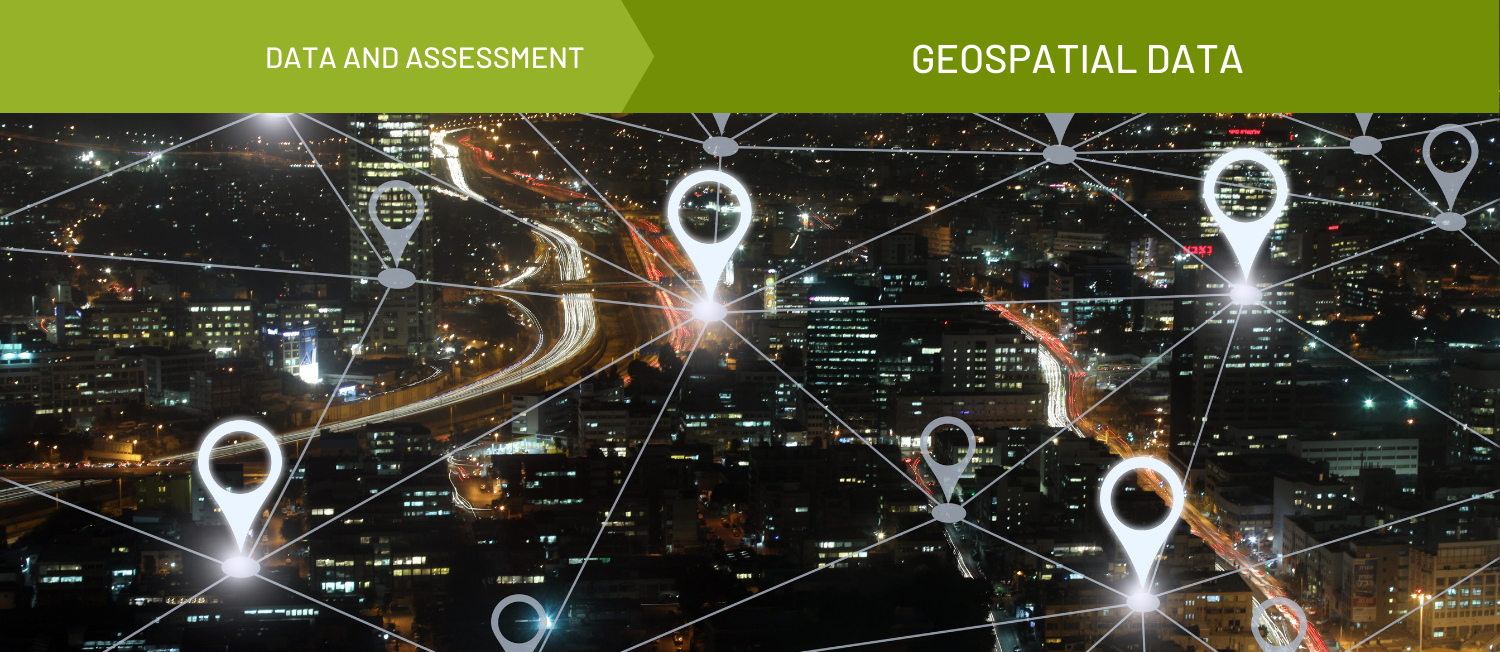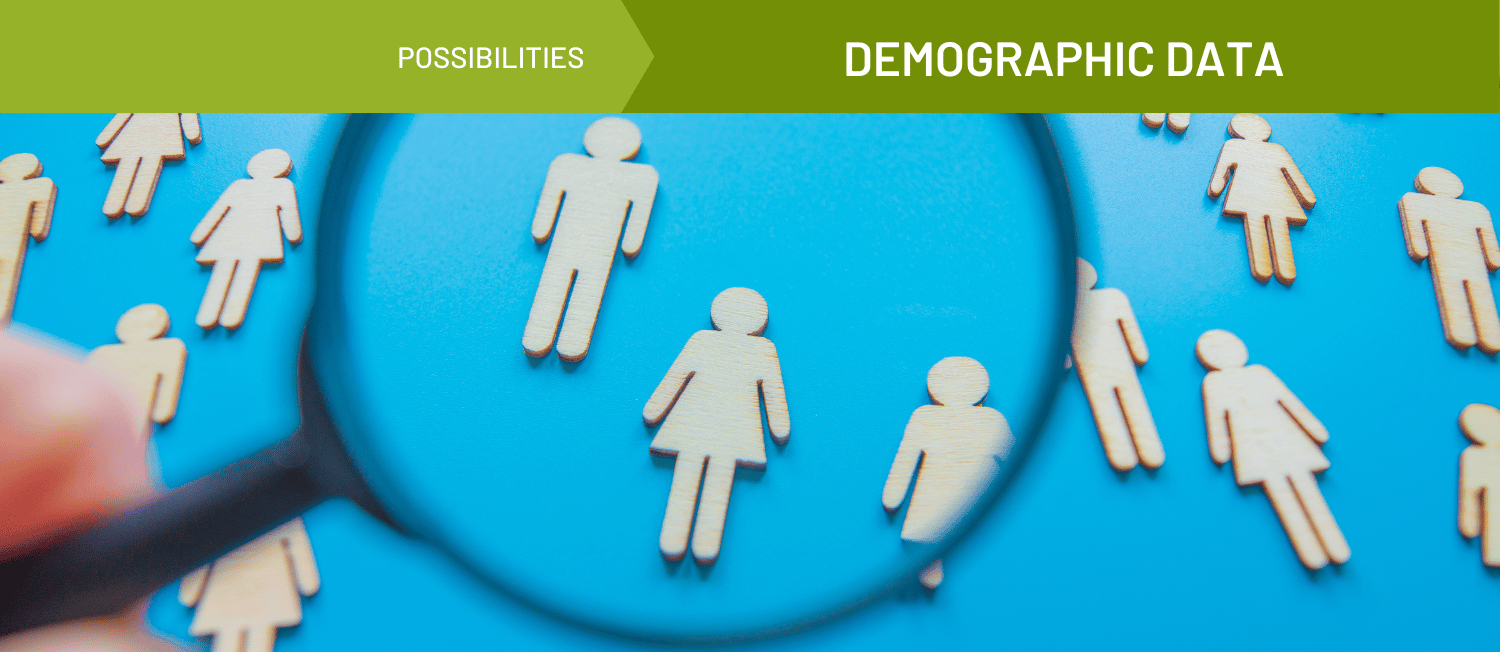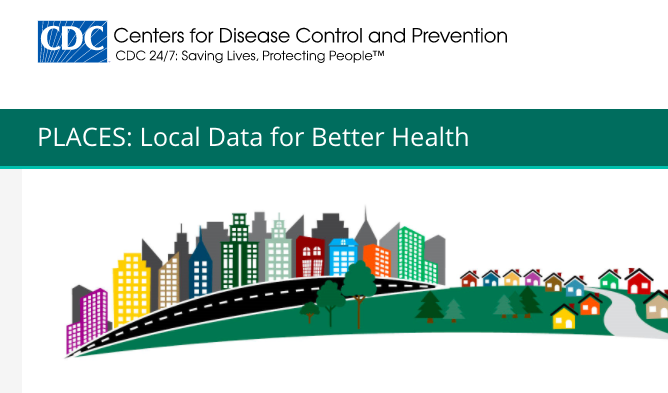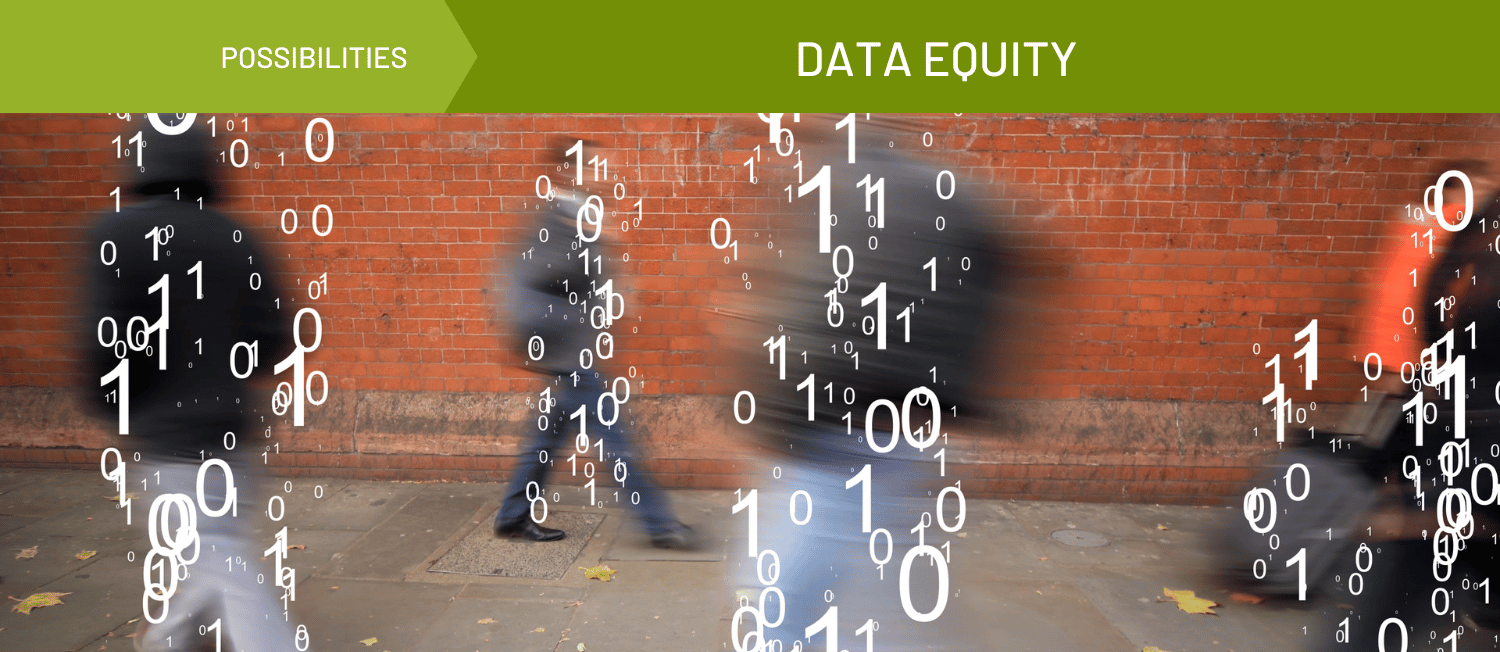An Introduction to Local Data
What is Local Data?
Data help us to see the world around us. At the neighborhood or community level, local data tell a story of place– shedding light on local conditions, community assets, and needs. Having data and knowledge about local conditions can be essential, as it reflects local conditions in communities and can be used to inform interventions that promote health and well-being. Local data support stakeholders, community organizations, and decision-makers by helping them to understand where to allocate resources (e.g., demonstrating where there is greatest need) and how to improve health and well-being (e.g., what interventions are most needed).
Local data can be sourced through various publicly-available national and state sources, like the American Community Survey, or PLACES: Local Data for Better Health; it can also be collected first-hand in a given community through local community surveys, key informant interviews, community conversations, and other primary methods. This Introduction to Local Data discusses the collection of local data and using the data to monitor health and community conditions and reflect the lived realities of communities.
Local data is an integral component of data ecosystems and can lead to improved health outcomes and thriving communities. This Introduction to Local Data helps readers:
Understand how measuring local conditions can drive health, well-being, and equity.
Appreciate how collecting both primary and secondary data can support knowledge and learning.
Understand the principles of data equity and how local data can fuel advocacy and community power-building.
Measuring Local Conditions
When summarized by geography, health and well-being data illuminate trends across place. Geographic data are data that are tied to a specific place—these data provide information about health conditions or trends occurring within a neighborhood, city, or county. This granular, rich information can expose health and disease patterns, identify inequities across place, and leverage assets to advance equitable well-being. With a local view, public health professionals, researchers, and policymakers can measure risk, exposures, and burdens within and between communities.
One way that state and local public health monitor local conditions is through disease surveillance, which entails monitoring disease trends and determining disease patterns in populations. Public health data surveillance is used to do comprehensive monitoring and analysis of health trends, which informs implementation of evidence-based strategies and interventions. During the COVID-19 pandemic, for example, local data played a crucial role in disease surveillance and outbreak response. Public health authorities utilized geospatial data on disease incidence to advance efforts in preventing and mitigating COVID-19 health threats, which enabled the development of tailored interventions to implement localized restrictions and social distancing measures. There is a set of established Notifiable Diseases (also called Reportable Diseases), and when diagnosed, these diseases require health providers (usually by law) to report to state or local public health officials. Notifiable diseases are of public interest by reason of their contagiousness, severity, or frequency, and tracking them helps public health officials prevent the spread of infectious diseases.
Local data help public health practitioners, researchers, and change advocates set priorities for local action and tailor their approach, focusing efforts and resources where they are needed most. Using geographic data helps us take an equity-oriented approach by identifying places with disproportionately high incidence of disease or poor access to healthcare services, or that are at increased risk of disease due to demographic characteristics. Geographic data about community health and well-being are available through many secondary sources for the entire U.S., enabling benchmarking to national and state levels. Primary data can be collected and geo-identified to enable analysis on the basis of place.
Collecting Local Data
Data collection involves systematically gathering information. In community change work, we frequently use both primary and secondary data. Data may be “primary” or “secondary,” depending on whether data are collected by those using the data. Primary data have been collected by those using the data (or close community partners), while secondary data have been collected and processed, or analyzed, by another party. Weaving primary data, secondary data, and stories together is a common practice that paints a richer picture of a given community.
Primary Data
Primary data may be gathered through surveys, interviews, direct observation, and community listening sessions. Because primary data are gathered by the researchers and communities themselves, the data output and analysis may be tailored to specific research questions of interest. Specificity comes at a cost—primary data collection can be expensive, challenging, and time-consuming to collect. As changemakers consider primary data collection, they should explore ongoing data collection efforts happening within the community and opportunities for data sharing, as well as secondary data that may be available publicly.
Community-based organizations and other local actors often collect primary data to measure community well-being and track health indicators across a period of time. For example, a local group may deploy a community survey or a series of listening sessions. The Well-being Assessment is a validated survey instrument that provides an overall measure of how an individual feels about their life. Used alongside other indicators of community health, surveys such as The Well-being Assessment can track advancement on what matters most in communities and spark change.
Health and Well-being Measurement Approach and Assessment Guide
Resource - Guide/handbook
Brought to you by 100MHL
Secondary data
Secondary data are gathered through public or private data sources, including government agencies, research institutions, academic journals, and other published materials. While secondary data may not be tailored like primary data, they are often easily accessible and cost-effective (many good data sources are free!) Looking to secondary data is an excellent way to begin community data work.
American Community Survey, PLACES, and AtlasPlus, among others, are important secondary sources of health and well-being data that are geographic and granular—available at the census tract, zip code, or county level. The American Community Survey is an ongoing annual survey conducted by the U.S. Census Bureau that provides detailed population and housing information. The CDC provides local health data through multiple data products, including PLACES, WONDER, AtlasPlus, and the Interactive Atlas of Heart Disease and Stroke. These public data sources provide relatively recent and granular data on a variety of key population and health indicators.
Practicing Data Equity
Practicing data equity when working with local data is essential, as it can shape our world as we know it, including policies, decisions, and outcomes that impact our daily lives. Data equity recognizes the importance of considering power, bias, and discrimination issues in data collection, analysis, and interpretation. At the local level, practicing data equity might look like expanding community ownership of data, applying practices that ensure community privacy and protection, and using data to tell community stories to move hearts and minds.
Learn more about data equity and how it can promote community self-determination.
Community data for community power
Data are power, and local data can empower communities with knowledge to drive transformational change. Data help us describe—and quantify—the communities in which we live, work, and play, and give us information we need for local decision-making, policy development, resource allocation, and advocacy. Communities often rely on data about their strengths, assets, opportunities, and needs to inform their position and make their case. Data can lend authority and legitimacy to community-based and grassroots efforts and may spark or give shape to social movements. Further, community ownership of data (when data are owned and controlled by the community from which they were collected) builds civic capacity, belonging, and civic muscle, and shifts power toward communities, including marginalized communities and communities of color.
Inclusive data systems
Establishing inclusive local data systems can advance justice and equity by building community power. Inclusive data systems actively prevent biased and discriminatory use of data, protect individuals and communities, and seek to shift a community’s orientation to knowledge production through community-owned data and participatory research. Inclusive data systems establish robust frameworks that promote data equity and weave together data that lift up community voices. Inclusive data systems can create data ecosystems that empower communities, promote cross-sector collaboration, and encourage equitable practices in data collection.
Inclusive data systems center the communities that have been both underrepresented by the data and harmed through discrimination it enabled. Data sovereignty, a closely linked concept, emphasizes the right of communities, organizations, and individuals to exercise control over the data generated in their communities. It acknowledges that data has become a valuable asset in today's digital age., and recognizes the importance of protecting and utilizing data in alignment with local laws, regulations, and interests.
Data about people and communities
Local data help us characterize communities and start to understand the people who live there. We often use multiple data sources, alongside community voice and storytelling, to paint a portrait of a community that is nuanced, balanced, and humanizing. Local data liberates information at a local level, which can empower changemakers, but it can also perpetuate harmful narratives. Care should be taken when collecting and working with local data to honor and protect the people and communities represented by the data.
Privacy and confidentiality
Local data tell us about the vital conditions of a place, and who is thriving there (and who is not). These data can be sensitive. The privacy of those providing data is always an important concern. Data that are tied to place can theoretically be tied back to individuals, and for this reason, care is needed to ensure privacy standards are enforced whenever place-based data are used. Practices, including informed consent, de-identified data, and data suppression, should be used when appropriate with local data to protect the people and communities represented.
Data Sharing
Data sharing is the act of making data available to people, organizations, stakeholders, and/or other partners. Within the context of a community, data-sharing efforts often serve to build relationships between partners and set the stage for ongoing shared stewardship. Data sharing fosters collaboration, responsibility, and transparency, which improves communication and fosters the trust necessary to bring about long-lasting change.
Transformative Change
Local data can play a transformative role in advancing health equity and improving communities' overall health and well-being. By leveraging local data, public health practitioners can engage communities to promote civic capacity, belonging, and civic muscle. Local data are incredibly valuable in measuring local conditions, which can inform inclusive and effective solutions for changemakers. Public health workers, stakeholders, and community members can gain a deeper understanding of local conditions by collecting their own data and can foster community engagement to build resilient, sustainable, and thriving communities.


 Original
Original















